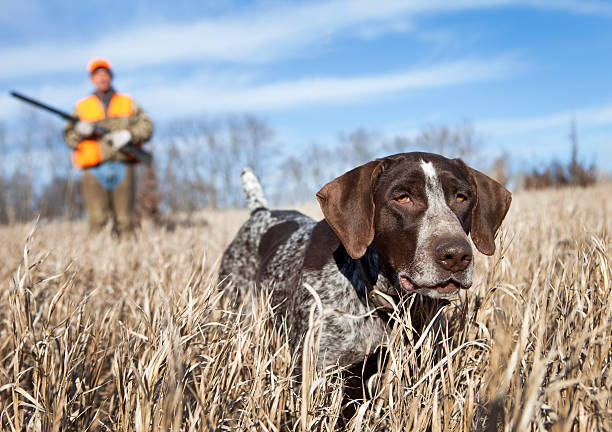
Summer, hot weather, and wheat stalks
It is important to bear in mind, when heading out into the countryside during the summer season, the dangers our hunting dogs are exposed to, such as the increase in the number of vectors like fleas and ticks, as well as the presence of grass awns. During the open summer hunting season, extra caution is needed. Be careful!
Injuries caused by grass awns are very common at this time of year, as the high temperatures cause them to dry out and detach easily.
It’s usually not hard to identify if a dog has a grass awn in its paw or ear, since the pain and discomfort often make it lick the affected paw or shake its head in an attempt to get rid of the awn in its ear.
Grass awns are the seeds of cereals, encased in a hard, elongated sheath ending in a sharp tip surrounded by small hairs that grow in one direction. This means that once an awn lands on a surface, it can only move forward, allowing its tip to pierce into it. They come in many sizes, some so small they are easier to detect by touch than by sight.
The most dangerous time for our faithful hunting companions begins when grasses and weeds start to yellow, which is when the awns are ready to be released by the wind. In just a few days, the fields will be parched.
The best strategy for dealing with them is undoubtedly prevention, so it’s advisable to avoid walking through overgrown grassy areas whenever possible. Still, it’s not always possible to avoid them completely—especially in certain areas of the countryside.
We also need to consider our dog’s anatomy. While for us a grass awn might be just an annoying prick in our sock or pants, a dog—regardless of its size—walks with its entire body at grass level, which means any part of it can be affected.
To make matters worse, dogs are covered in hair, which makes it easier for awns to get caught when brushing past. Once attached to the coat, the awn moves forward until it encounters an obstacle. At that point, the sharp tip begins to rub against the skin, eventually creating a wound and penetrating it. Yikes!
If we find the awn at this stage—still exposed and only embedded by the tip—we can remove it ourselves by parting the hair, disinfecting the area, and carefully extracting it with tweezers to avoid breaking it.
Afterward, we must keep an eye on the dog to ensure it doesn’t lick the area or get an infection. If the awn is in a less visible spot, it may fully enter the skin without us noticing and travel inside the tissue. In that case, a veterinarian must intervene to remove it.
Awns tend to lodge themselves between the toes or into the pads of our dogs’ paws. Every time we return from a walk through areas where awns may be present, we should thoroughly inspect the paws and between the toes for even the smallest one that may have gotten stuck.
To prevent this, it’s helpful to trim the hair in these areas as much as possible during this season. Awns can also be found in any skin fold of the dog. That’s why trimming the coat of long-haired dogs is also a good idea.
If an awn enters a body orifice—eyes, nose, or ears—we must never try to remove it ourselves, as this could worsen the problem.
A joyful outing in the countryside with our loyal hunting companion can quickly turn into an emergency trip to the vet if we’re not careful with awns. That’s why it’s so important to thoroughly check our dogs if we’ve been in areas where awns are present—especially once they start drying out. A good brushing is essential, but first, we should run our hands all over the dog’s body to check that no awns are stuck anywhere. Pay close attention to their pads, between the toes, their ears, nasal cavity, mouth, and even the eyes, as awns can get lodged in all these areas.